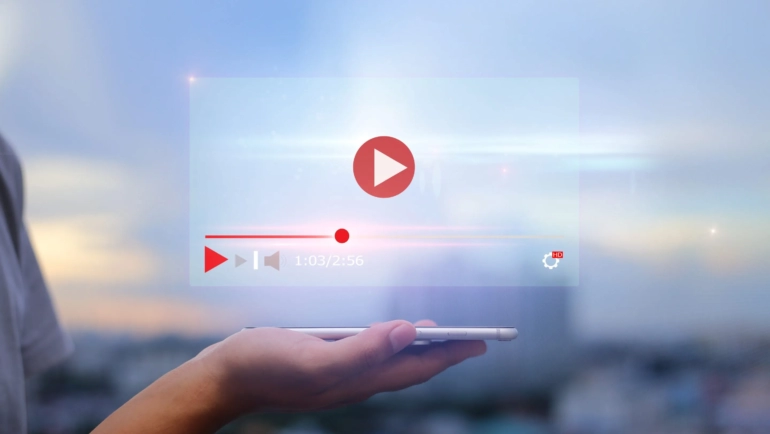524Views 0Comments
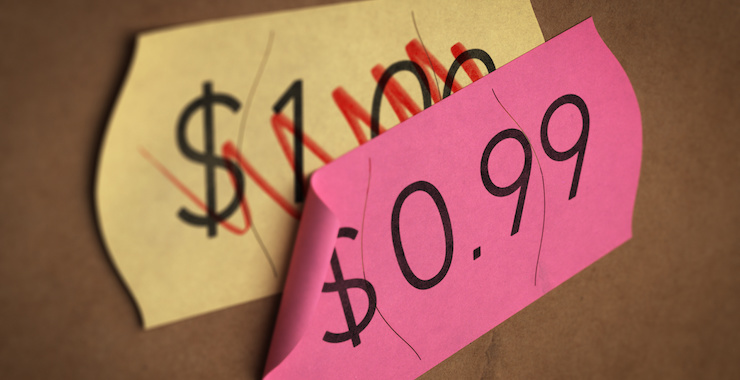
There are two opinions about nines in price tags: some people think it doesn’t work, others think it does, although they admit that this approach is unethical. I’ll say right off the bat: by “works” I mean “influences the buying decision.” But first, let’s look at where these nines came from in the first place.
Where the price tags got the nines from
There are several versions. One says that store owners tried to resist cashier theft: when the price is even, you don’t need change and therefore you don’t have to open the cash register and it’s easier to put the money in your pocket. Another one says that the price of 99 on the end came about thanks to a certain publisher: his newspaper worth one cent was badly sold because of the small number of small coins in circulation, so the publisher persuaded his advertisers to lower the price of goods by one cent and thus stimulate its circulation. Thus a new fashion arose for price tags with nines on the end.
In any case, the uneven price tags were not invented by marketers and advertisers. They appeared for some other reasons and only later businessmen noticed that it increased sales. The story is old, it’s 100 years old, and of course we wonder if it still works.
But you can’t talk about buying decisions without talking about how we make decisions in the first place.
How do we make decisions and what are heuristics?
I’m starting from the tenets of behavioral economics, a discipline that studies the influence of psychological, cognitive, emotional, social factors on decision-making. One of its pioneers, Daniel Kahneman, received the Nobel Prize in 2002 for his contribution to the integration of psychology and economics, revealing the mechanisms of decision-making under uncertainty.
We make tens of thousands of decisions every day, varying in importance and complexity: to take a step (literally, a foot step), where to turn, what to eat for breakfast, how to respond to a threat, etc. Most of these decisions we make unconsciously, automatically. If they were not, our brain would go into a stupor.
So the brain is constantly analyzing huge amounts of signals, information, ideas. It prioritizes, makes decisions. And to facilitate its work and save energy, it periodically “takes a shortcut” – as if it “recognizes” situations it has been in before, and makes decisions based on experience, without deep analysis. For us it happens in the background – we do not notice the process of analysis and automatic decision-making. Such automatisms are called heuristics.
There are enough heuristics to solve a problem, but this solution is not necessarily the best or rational one. That is, from a rational point of view, the solution may not be the best, but the heuristic reduces the cognitive load and saves the energy consumed by the brain.
Our brain saves energy and takes a “shortcut” whenever possible. You can take the long way, having analyzed all aspects, or you can take the short way: not everything is taken into account, but energy efficient and fast.
Of course, not all decisions can be made automatically: try to multiply in your mind 524 by 833 – here heuristics will not help, unless of course you are constantly multiplying and can now do it on the automatic. But most actions and decisions are not like that – they are repetitive and do not require deep and conscious engagement in them.
You could say that heuristics are a protective, evolutionary mechanism that has allowed us to survive without overloading our brains and/or increasing the amount of energy we consume to unacceptable levels. Energy has been in short supply for most of human history-we only recently learned how to industrially produce food rich in sugar and fat.
As stated above, heuristic solutions, may not be rationally optimal. These suboptimalities are called cognitive distortions.
Cognitive distortions
Formally, cognitive distortion is defined as a systematic deviation of behavior from norms of rationality. A certain amount of cognitive distortion has been studied – for this purpose, experiments are conducted in which the behavior of participants is analyzed. They always end up finding irrational patterns of behavior that are nevertheless adhered to by the majority.
Interestingly, these distortions work, that is, they affect our behavior even if we are aware of them. To illustrate, they like to show optical illusions: you know what the catch is, but you can’t see it. So it is with distortions: they are a kind of illusion, only not optical, but mental.
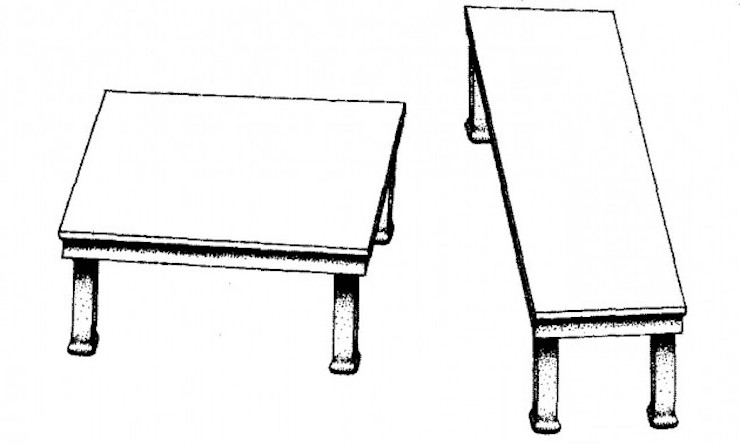
There are many lists of cognitive distortions, they are not formalized and are constantly expanding, and you won’t find a story with jagged price tags in them. But in my opinion, if the nines in the price tags work, it is very similar to such distortions or is a special case of some other distortion.
If we were based solely on rational considerations, then reducing the price by a cent would not affect us. But if it does, it means that we’re glitching somewhere, which already looks like a cognitive distortion.
Do the nines in the price tags work and why?
If it’s a distortion, we can’t claim that “it doesn’t work for me” even based on the definition of distortion: we don’t notice that we’re influenced by it anyway.
So let’s look at the studies. I’ll show them a little later, but, running ahead, I’ll say: the researchers agree that jagged price tags work. Why – only hypotheses here, of course:
- Valuing from left to right.
We evaluate numbers from left to right – by the numbers. Therefore, the first digit has a stronger effect, and the effect we discuss is often referred to in the literature as left-to-right digit distortion.
- The benefit of comparing to an even digit.
We tend to compare everything. And we also compare an uneven price tag with a hypothetical even figure. $299 is less than 300, and we perceive this as an unexpected benefit. It’s small, but small benefits we overestimate is another distortion.
- The perception of a discount.
We see $299 and think it’s a discounted price, otherwise why would it be flat?
Are there studies on the subject?
There are a lot of them, so let’s briefly review the most extensive, the most popular and the most recent.
90,000 directories.
This is the most extensive study I’ve come across. It was done in 1996 – source.
A company, selling through mail-order catalogs, sent out 90,000 of the same catalogs, which differed only in price: a third had flat prices, meaning they ended in “00” (for example, $18.00), a third had “99” ($17.99), and another third had “88” ($17.88).
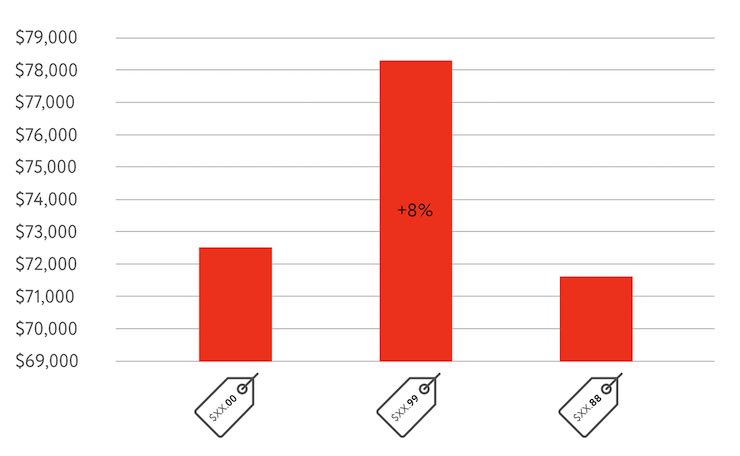
Catalogs with prices “with nines” brought 8% more sales than catalogs with flat prices.
Also catalogs with “88” prices brought as many sales as catalogs with flat prices. Apparently, this supports the theory that prices with nines create the illusion of a discount, but that other numbers do not or do weaker.
You could say that the 1996 study is not particularly relevant: 25 years have passed, and consumption patterns have changed a lot – we now buy online rather than through catalogs.
Personally, I do not think that there is a fundamental difference – to look at the products with price tags in a printed magazine or on the website. But more importantly, if the left-figure effect is really a cognitive distortion, it’s not a thing that changes quickly. Many distortions are and exist because our brains were formed thousands of years ago and are not particularly aware of today’s consumption patterns. For the history of the brain, 25 years is a second.
Still, let’s look at some more recent research. Modern works don’t question the effect – they mostly examine some aspect of it. For example, when the effect is more pronounced, they test hypotheses about the causes of the effect, etc. In the process, the effect is usually confirmed, but more often than not that is not the purpose of the research.
When the distortion of the left figure has a stronger effect
There are marketing activities that require a budget, but are not related to promotion.
2005, a famous study tentatively titled “Wisdom by the penny and stupidity by the pound,” – source.
- The left-hand figure changes. There is a perceived difference between 3.00 and 2.99, but not between 3.60 and 3.59, although mathematically it is the same.
- The difference between the values is small. If we have to compare 3.99 with 5.00 and 4.00 with 5.00, we perceive it as a more significant difference than in the situation of comparing 3.99 with 10 and 4.00 with 10.00. Increased distance – decreased strength of effect.
What kind of advertising messages works with.
- Example acquisition message: “Pump up your abs for $39 ($40)/month”.
- On avoiding loss: “Don’t miss the opportunity to pump abs for $39 ($40)/month.”
Experiments of 2012 have shown that an uneven price ($39) works better when a purchase is communicated, and there is no difference for an even price of $40 – source.
What products works with
The effect is more pronounced with purchases of “hedonistic” goods, that is, optional purchases made for pleasure as opposed to utilitarian purchases – source, 2014.
The authors’ hypothesis is that people need self-justification when buying optional items so they don’t feel guilty. And the uneven price, which gives a sense of discount, serves as such an excuse.
Whether to specify the old price.
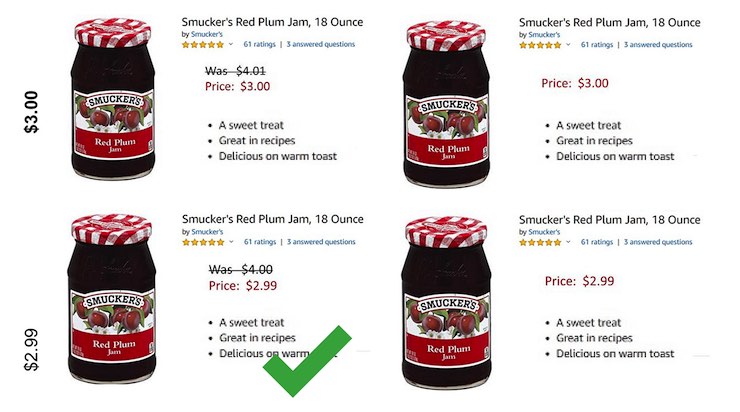
The purpose of the authors is to understand in which case the unequal price will work better: when it can or cannot be compared with something. That is, in one case buyers were shown two prices (old and new), and in the second – one price.
The effect is stronger if the jagged price can be compared with the other. The hypothesis is that when people see two prices, they compare them numerically – and then the effect is stronger. If one of the prices has to be recalled, people tend to round the value, and then the effect is less pronounced.
Distortion of the left digit is more pronounced when the price can be compared with the other.
In my opinion, there are other effects at work here, in particular the presence of a discount, as well as the linkage effect – another distortion expressed in the fact that we tend to “link” unknown values to known values.
Another finding of the study is that regular consumers of a product category are less susceptible to left-figure distortion. In other words, those who frequently buy jam are less susceptible to distortion because they know the prices of jam and remember them, and, as we have already found out, we round up when we remember – source.
Let’s end here with the studies – there are many, and the conclusions are largely repetitive. Left digit distortion exists and affects us, though nuances are possible.
When discussing mispricing, the question of ethics often arises: do sellers have the right to use this technique, are they not manipulating consumer behavior? Let’s leave ethics for discussion – in my opinion, it’s a matter of personal choice. But below is an interesting story about a business that tried to do away with nines in prices.
One Failure Story
There’s a fellow in America, Ron Johnson. He worked at Apple for 12 years and created their retail stores – those famous Apple Stores. At the end of 2011, Johnson moved to the CEO position at JCPenney to change the company’s image. His key idea was “fair pricing” and doing away with fake discounts, coupons, and comparing old and new prices on price tags. He also decided to do away with jagged prices with nines.
All in all, Johnson has done what many would call ethical treatment of customers.
Prices were reduced by an average of 40%, and price tags were made flat – all ending in “00.” The number of sales was reduced by a factor of 50, from 600 to 12 a year.
The result: within a year, sales were down 25%, and Johnson was fired.
History is silent as to whether consumers felt better – we can’t rule out that they bought more goods, or maybe, conversely, stopped buying unnecessary items, but for the retailer the result was disastrous.
How to resist if you are a customer
The main recommendation usually given in the context of cognitive distortions is to actively resist. Your job is to connect a conscious level of decision-making, and that’s a difficult task, requiring engagement and directed attention.
So the worst advice you can give yourself is to think, “That doesn’t work for me.” It does. And if you accept that it does, and begin to actively resist it, then the impact of the effect can be reduced.
Key points
- Research confirms that uneven price tags with nines work. But not always.
- The effect is stronger when the first (left) digit changes.
- Distortion of the left digit is more pronounced for: 1) acquisition messages 2) hedonic items 3) when comparing prices 4) for occasional shoppers in a particular product category.

